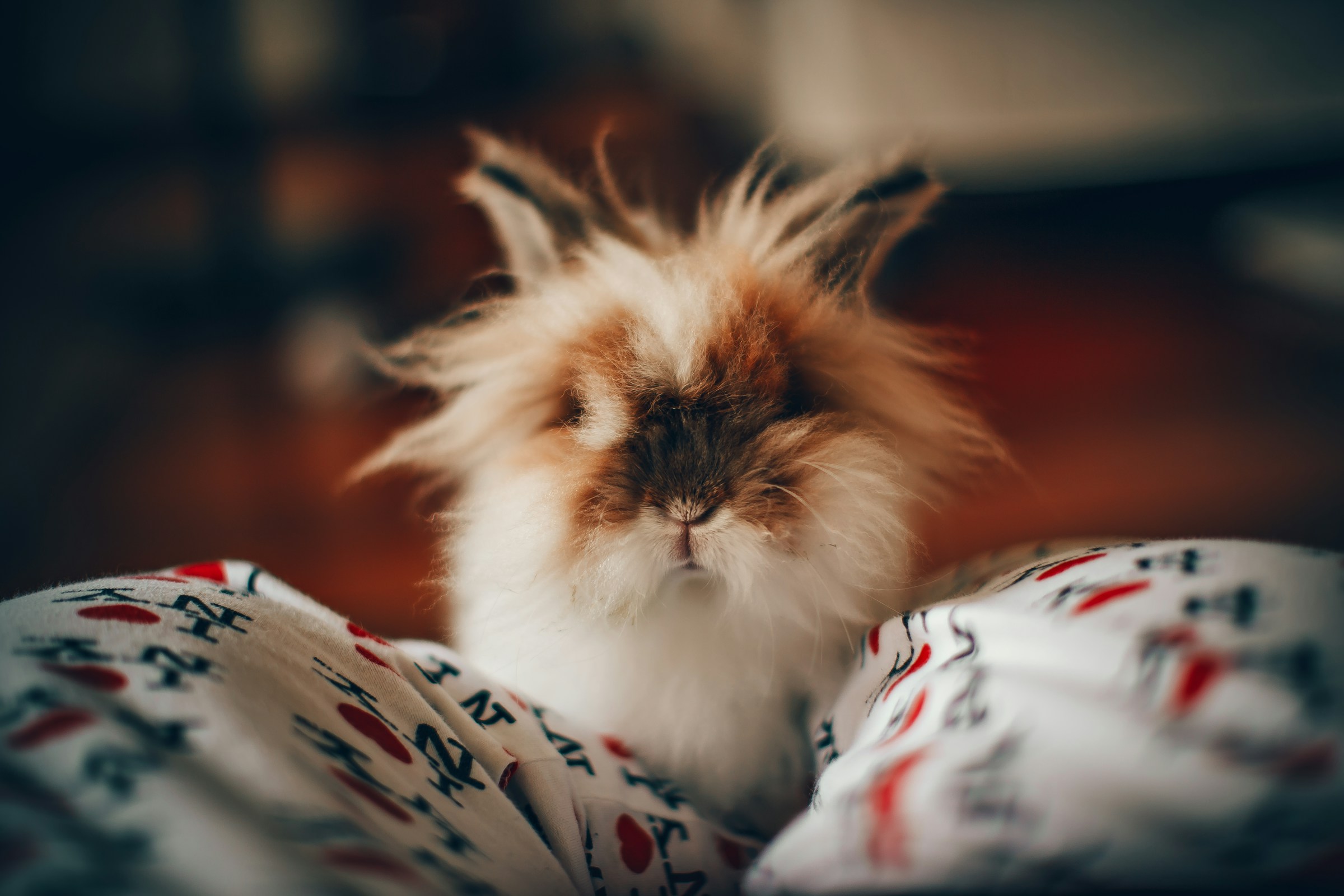Understanding Heat Stroke in Rabbits: Essential Tips for Care During UK Heatwaves
As the UK experiences increasingly hot summers, it’s crucial for pet owners, especially those with rabbits, to understand the dangers of heat stroke and how to protect their beloved pets. Here’s a comprehensive guide to help you keep your rabbits safe and cool during the hot weather.
What is Heat Stroke in Rabbits?
Heat stroke, also known as heatstroke, is a life-threatening condition that occurs when an animal’s body temperature rises too high, causing central nervous system dysfunction.
Cela peut vous intéresser : Ultimate Guide to Keeping Your Pet Safe and Calm During Guy Fawkes Night Fireworks
How Does it Happen?
Heat stroke in rabbits can occur quickly, especially during heatwaves. Rabbits, being small and furry, have a limited ability to regulate their body temperature. When the ambient temperature rises, their body temperature can skyrocket, leading to severe health issues.
- High Temperatures: Rabbits can start to feel the effects of heat stress when the temperature exceeds 25°C (77°F). However, the critical threshold is often much lower, especially for older or health-compromised rabbits.
- Humidity: High humidity exacerbates the problem because it prevents the rabbit’s body from cooling down efficiently through sweating.
- Lack of Shade: Without adequate shade, rabbits are exposed to direct sunlight, which can rapidly increase their body temperature.
- Poor Ventilation: Inadequate ventilation in enclosures or cages can trap hot air, making it difficult for rabbits to cool down.
Signs of Heat Stroke in Rabbits
Recognizing the signs of heat stroke is crucial for prompt action. Here are some key indicators:
A lire en complément : Unlocking Happiness: Essential Tips for Keeping Your Indoor Ragdoll Cat Mentally Engaged
Common Signs:
- Increased Body Temperature: A rabbit’s normal body temperature is around 38-40°C (100-104°F). If it exceeds 42°C (108°F), it is a sign of heat stroke.
- Lethargy: Rabbits may become lethargic or unresponsive.
- Panting: Rabbits do not typically pant, so if you see your rabbit panting, it is a sign of distress.
- Wet Ears and Paws: Rabbits may try to cool down by wetting their ears and paws.
- Seizures and Coma: In severe cases, heat stroke can lead to seizures and even coma.
How to Prevent Heat Stroke in Rabbits
Prevention is the best approach to keeping your rabbits safe during hot weather. Here are some essential tips:
Provide Cool Water:
- Fresh Water: Ensure your rabbit always has access to cool, fresh water. Change the water frequently to keep it cool.
- Water-Rich Foods: Feed your rabbit water-rich foods like cucumbers, carrots, and leafy greens.
Keep Them Cool:
- Shade: Provide a shaded area for your rabbit to retreat to. You can use a canopy or a shaded enclosure.
- Cooling Mats: Use cooling mats or wet towels to help lower your rabbit’s body temperature.
- Ventilation: Ensure good ventilation in the enclosure by adding fans or keeping windows open.
Monitor the Temperature:
- Temperature Checks: Regularly check the temperature in your rabbit’s enclosure to ensure it does not exceed safe levels.
- Move to Cooler Areas: If possible, move your rabbit to a cooler area of the house during the hottest parts of the day.
Practical Advice for Welfare
Here are some practical tips to ensure your rabbit’s welfare during hot weather:
Create a Cool Environment:
- Ice Packs: Place ice packs wrapped in towels near your rabbit’s enclosure to keep the air cool.
- Mist with Water: Mist your rabbit’s enclosure with water to lower the temperature.
Adjust Feeding Habits:
- Avoid Hot Feeds: Avoid feeding your rabbit hot foods or foods high in protein during hot weather.
- Early Morning Feeding: Feed your rabbit early in the morning or late in the evening when it is cooler.
Veterinary Care:
- Regular Check-Ups: Schedule regular check-ups with your veterinarian to ensure your rabbit is healthy and not showing any signs of heat stress.
- Emergency Preparedness: Know the emergency contact details of your veterinarian in case your rabbit shows signs of heat stroke.
Comparison of Heat Stress in Different Animals
Heat stress affects various animals differently. Here is a comparison of how heat stress impacts rabbits, dogs, cats, and farm animals:
| Animal | Signs of Heat Stress | Prevention Tips |
|---|---|---|
| Rabbits | Lethargy, panting, wet ears and paws | Provide cool water, shade, cooling mats, good ventilation |
| Dogs | Panting, drooling, collapse | Provide cool water, shade, regular breaks, avoid hot surfaces |
| Cats | Panting, restlessness, hiding | Provide cool water, shade, quiet spaces, avoid direct sunlight |
| Farm Animals | Reduced feed intake, increased respiratory rate | Provide cool water, shade, good ventilation, monitor body temperature |
Real-Life Examples and Anecdotes
A Personal Experience:
One summer, a rabbit owner noticed her pet rabbit, Fluffy, was acting lethargic and panting heavily. She quickly realized that the temperature in the enclosure had risen too high. She moved Fluffy to a cooler area, provided cool water, and used a wet towel to lower her body temperature. Thanks to prompt action, Fluffy recovered fully.
Veterinary Advice:
“During hot weather, it’s crucial to monitor your rabbit’s behavior closely. If you notice any signs of heat stress, act immediately. Providing cool water and shade can make a significant difference,” advises Dr. Jane Smith, a veterinary expert.
Long-Term Impacts of Heat Stress
Heat stress can have long-term impacts on rabbits, including:
Reduced Fertility:
Heat stress can affect reproductive performance in rabbits, similar to what is observed in dogs and other animals.
Immune System Impairment:
Heat stress can impair the immune system of rabbits, making them more susceptible to infections.
Behavioral Changes:
Rabbits may exhibit behavioral changes such as reduced activity and altered feeding habits due to heat stress.
Heat stroke is a serious condition that can affect rabbits quickly, especially during UK heatwaves. By understanding the signs of heat stroke, taking preventive measures, and ensuring your rabbit’s welfare, you can keep your pet safe and healthy.
Here is a detailed list of tips to summarize the key points:
- Provide Cool Water: Ensure fresh, cool water is always available.
- Keep Them Cool: Provide shade, cooling mats, and good ventilation.
- Monitor Temperature: Regularly check the temperature in the enclosure.
- Adjust Feeding Habits: Avoid hot feeds and feed early in the morning or late in the evening.
- Veterinary Care: Schedule regular check-ups and know emergency contact details.
- Create a Cool Environment: Use ice packs and mist the enclosure with water.
By following these tips, you can make sure your rabbit stays cool and safe during the hot summer months. Remember, prevention is key, and prompt action can save your pet’s life if you suspect heat stroke.
















